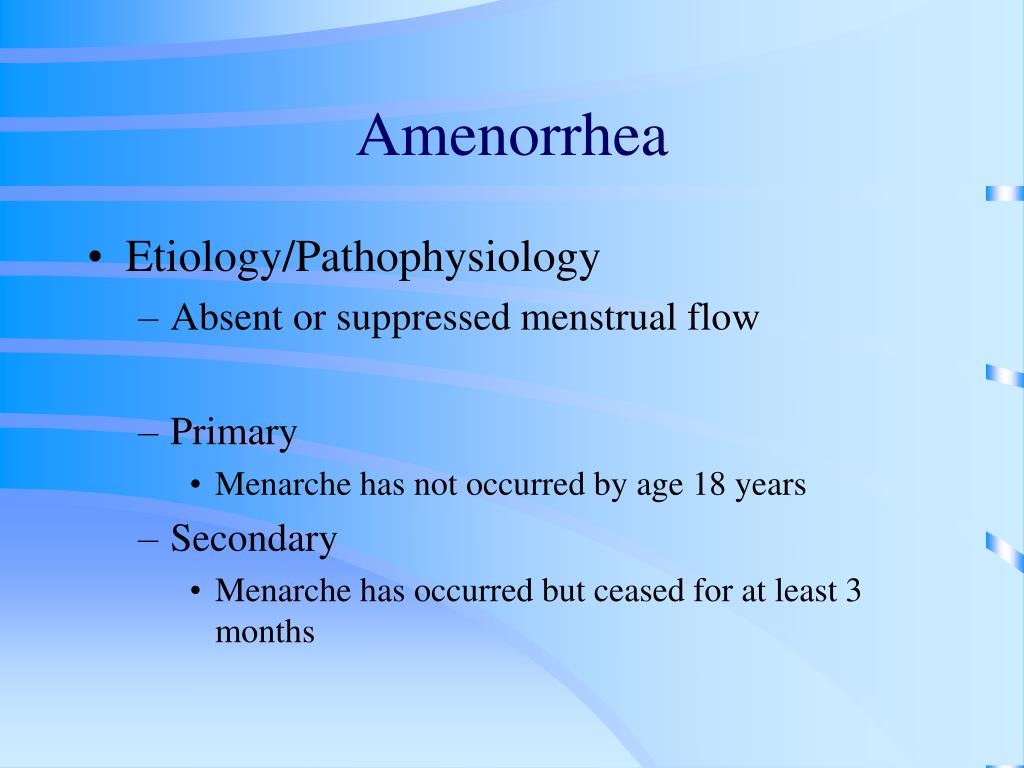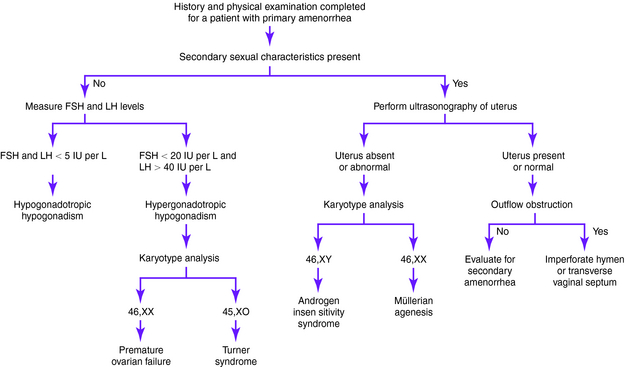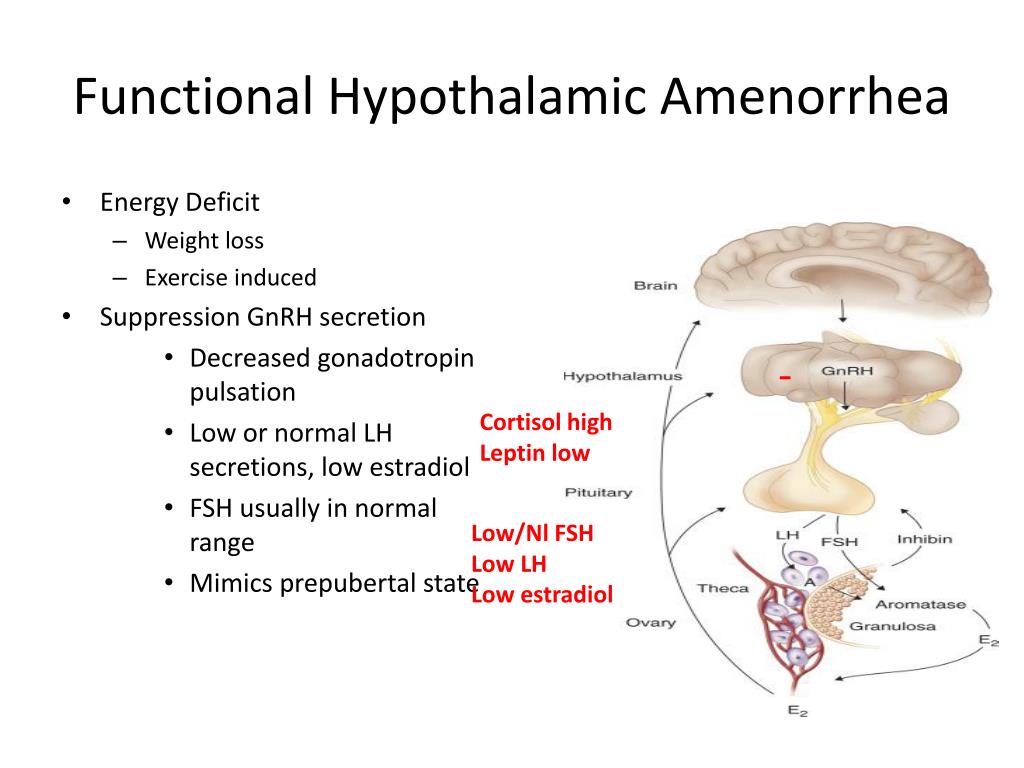Reasons for amenorrhea. Comprehensive Guide to Understanding Amenorrhea: Symptoms, Causes, and Treatments
What is amenorrhea? How does it affect a woman’s health? Explore the symptoms, potential causes, and available treatments for this condition. Get the answers to your key questions about amenorrhea.
Understanding Amenorrhea: The Basics
Amenorrhea is the medical term used to describe the absence of menstrual periods in women. There are two main types of amenorrhea: primary and secondary. Primary amenorrhea occurs when a woman has not started menstruating by the age of 16, while secondary amenorrhea is when a woman misses her period for three consecutive months or more after previously having regular menstrual cycles.
Symptoms of Amenorrhea
The primary symptom of amenorrhea is the absence of a monthly menstrual period. However, there are other related symptoms that may accompany amenorrhea, including:
- Headaches
- Vision changes
- Nausea
- Excess facial hair growth
- Hair loss
- Changes in breast size
- Milky discharge from the breasts
Causes of Amenorrhea
The causes of amenorrhea can vary widely and often depend on the type of amenorrhea. Some of the most common causes include:

Primary Amenorrhea
- Family history of amenorrhea or early menopause
- Genetic or chromosomal defects, such as Turner syndrome
- Being severely overweight or underweight
- Eating disorders
- Excessive exercise
- Poor diet
- Stress
Secondary Amenorrhea
- Pregnancy and breastfeeding
- Certain birth control methods, such as pills, injections, or IUDs
- Some medications for depression or high blood pressure
- Chemotherapy and radiation treatment
- Polycystic ovary syndrome (PCOS)
- Fragile X syndrome or fragile X-associated primary ovarian insufficiency
- Thyroid or pituitary gland problems
- Hypothalamic disease
- Uterine scar tissue
Diagnosing Amenorrhea
If you are experiencing amenorrhea, it’s important to see your healthcare provider, such as a family doctor or gynecologist. They will start by taking a medical history and performing a physical examination. Depending on the suspected cause, they may order additional tests, such as:
- Pregnancy test
- Karyotype test to check chromosomes
- Genetic testing for the FMR1 gene
- Imaging tests to examine the female reproductive organs
- Blood tests to check hormone levels (thyroid, ovarian, testosterone, estrogen)
Treating Amenorrhea
The treatment for amenorrhea will depend on the underlying cause. Potential treatments may include:

- Lifestyle changes, such as adjusting diet, exercise, and stress management
- Hormonal medications or birth control pills to regulate the menstrual cycle
- Medications to stimulate ovulation, such as for PCOS
- Hormone therapy to balance hormones
- Surgical interventions in rare cases, such as correcting genetic/chromosomal defects or removing uterine scar tissue
Living with Amenorrhea
For many women, their menstrual cycles will return to normal following appropriate treatment. However, in some cases, the underlying health condition may mean that a woman never regains a normal menstrual cycle. Depending on the cause, amenorrhea may also affect fertility. It’s important to work closely with your healthcare provider to manage your condition and understand the potential implications for your overall health and reproductive function.
Key Questions About Amenorrhea
Can a woman with amenorrhea still get pregnant? The ability to become pregnant will depend on the underlying cause of the amenorrhea. Some women may still be able to conceive, while others may struggle with fertility issues.

What are the potential benefits, risks, and side effects of amenorrhea treatments? The specific risks and benefits will vary depending on the treatment approach. Your healthcare provider can discuss the details and help you weigh the options.
If I’ve had amenorrhea, will I always have it or can I get it again? The long-term prognosis for amenorrhea can vary. In some cases, the menstrual cycle may return to normal, while in others, the condition may be chronic or recur. Regular monitoring and follow-up with your healthcare provider is important.
Amenorrhea: Symptoms, Causes and Treatments
What is amenorrhea?
Amenorrhea is the medical term for when a woman doesn’t have menstrual periods. There are two types of amenorrhea. Primary amenorrhea is when you are late to start your period for the first time. The normal age range is 14 to 16 years old. Secondary amenorrhea is when you miss a period for 3 months in a row or more.
Symptoms of amenorrhea
The main symptom of amenorrhea is the absence of your monthly period. It often signifies a larger health problem or condition. Related symptoms can include:
- Headache.
- Vision changes.
- Nausea.
- Extra facial hair.
- Hair loss.
- Changes in breast size.
- Milky fluid, or discharge, from breasts.
What causes amenorrhea?
The main causes of primary amenorrhea include family history, genetics, and lifestyle. Women with the following factors are more at risk:
- A family history of amenorrhea or early menopause.

- A genetic or chromosomal defect. These can affect your ovary function and menstrual cycle. Turner syndrome is one example.
- Severely overweight or underweight.
- An eating disorder.
- An extreme exercise pattern.
- A poor diet.
- Stress.
Pregnancy, breastfeeding, and menopause can cause secondary amenorrhea. Other possible causes include:
- Some birth controls, such as pills, injections, or intrauterine devices. These can affect your menstrual cycle during and after use.
- Some medicines for depression and blood pressure.
- Chemotherapy and radiation treatment.
- Polycystic ovary syndrome (PCOS).
- Fragile X syndrome (caused by the FMR1 gene) or fragile X-associated primary ovarian insufficiency (FXPOI).
- Problems with your thyroid or pituitary gland.
- Hypothalamic disease.
- Uterine scar tissue.
How is amenorrhea diagnosed?
Contact your family doctor or a gynecologist if you think you have amenorrhea. If you’ve never menstruated, the doctor will review your health history and do an exam. A regular physical and pelvic check can show signs of puberty.
If you’ve never menstruated, the doctor will review your health history and do an exam. A regular physical and pelvic check can show signs of puberty.
For secondary amenorrhea, the doctor will begin with a pregnancy test. If this is negative, he or she will do an exam and review your health history.
Your doctor may order additional tests to rule out or determine a cause. A karyotype test looks at your chromosomes. A genetic test looks for the mutated FMR1 gene. Imaging tests can look at your female organs. A blood test can check your:
- Thyroid function (thyroid-stimulating hormone, or TSH, levels).
- Ovary function (follicle-stimulating hormone, or FSH, and luteinizing hormone, or LH, levels).
- Testosterone (“male hormone”) levels, which can detect PCOS.
- Estrogen (“female hormone”) levels.
Can amenorrhea be prevented or avoided?
It is hard to prevent amenorrhea. Try to maintain a healthy diet and exercise plan. If you are underweight or overweight, talk to your doctor about how to find a balance.:max_bytes(150000):strip_icc()/can-i-be-pregnant-if-i-had-a-lighter-than-normal-period-2758450-5bc3faf3c9e77c0051e33c7b.png) Once you begin to menstruate, keep track of your periods each month. This can help identify amenorrhea early on and aid in your diagnosis and treatment. It also is good practice if you try to become pregnant in the future.
Once you begin to menstruate, keep track of your periods each month. This can help identify amenorrhea early on and aid in your diagnosis and treatment. It also is good practice if you try to become pregnant in the future.
Amenorrhea treatment
Treatment options for amenorrhea vary based on the cause. You may need to make lifestyle changes, such as diet, activity, and stress. Certain hormonal medicines and birth control pills can help trigger a period. Others can help trigger ovulation, such as for PCOS. Hormone therapy may be used to balance out your hormones.
Surgery is rare, but may be needed in some cases, such as:
- To correct genetic or chromosomal defects.
- To remove a pituitary (brain) tumor.
- To remove uterine scar tissue.
Living with amenorrhea
For most women, their monthly periods return following treatment. In some cases, your related health problem may mean you never have a period. Depending on your underlying cause, you may struggle with fertility.
Questions to ask your doctor
- If I have amenorrhea, can I still get pregnant?
- What are the benefits, risks, and side effects of treatment?
- If I have amenorrhea, will I always have it or can I get it again?
Resources
Eunice Kennedy Shriver National Institute of Child and Human Health Development: Amenorrhea
Amenorrhea > Fact Sheets > Yale Medicine
Overview
Most women in their reproductive years accept menstruation as a normal part of life, if not exactly their favorite part. Though frequency, duration, and other period-related matters may vary from one girl or woman to the next, the fact that you get one is healthy—and not getting your period (called amenorrhea) may signal that something is amiss.
Amenorrhea is not a disease, but it can be a symptom of other conditions including hormonal, genetic, and structural disorders. Amenorrhea is normal before puberty, during pregnancy, while breastfeeding, and after menopause.
The menstrual cycle is controlled by a complex hormonal system. Each month, hormones are released in a certain order to prepare the uterus and the rest of the body for pregnancy. If everything is operating correctly and there is no pregnancy, the uterus sheds its lining, leading to menstruation. But if some aspect of the hormonal system isn’t working correctly, the result can be amenorrhea. In fact, hormonal issues are the most common reason for it.
The condition is broken into two categories. Primary amenorrhea, which can be caused by congenital differences in the development of reproductive organs, is the failure to have your first period by age 16 (when there is already breast development and other changes of puberty, or secondary sexual characteristics). If there are no secondary sexual characteristics by age 14, you should seek medical care. Secondary amenorrhea is when women experience an absence of their period for more than three cycles—after having had regular periods. Secondary amenorrhea is much more common than primary amenorrhea but, if not related to pregnancy or other circumstances, such as the use of particular types of birth control that prevent periods, is rare, affecting 3 to 4 percent of women.
Secondary amenorrhea is much more common than primary amenorrhea but, if not related to pregnancy or other circumstances, such as the use of particular types of birth control that prevent periods, is rare, affecting 3 to 4 percent of women.
Amenorrhea often resolves when the underlying condition is treated. At Yale Medicine, our obstetrician-gynecologists are experienced at diagnosing and treating primary and secondary amenorrhea.
Physicians at Yale Medicine are well-equipped to diagnose any of these conditions, as well as provide comprehensive care for patients diagnosed with amenorrhea. “We offer care throughout the lifespan, from pediatric and adolescent gynecology through menopause,” says Alla Vash-Margita, MD, chief of Yale Medicine Pediatric & Adolescent Gynecology.
Are other symptoms associated with amenorrhea?
The absence of menstrual periods is the most common symptom of amenorrhea. Depending on the cause, you may experience these symptoms as well:
Depending on the cause, you may experience these symptoms as well:
- Excess body hair (hirsutism)
- Hair loss
- Headache
- Lack of breast development
- Milky discharge from the breasts
- Vision changes
- Failure to ovulate
What are the risk factors for amenorrhea?
In addition to genetic conditions, anything that can disrupt the normal functioning of the hypothalamic or pituitary gland can lead to amenorrhea.
Specific risk factors for amenorrhea include the following:
- Family history of amenorrhea or early menopause
- Excessive exercise
- Obesity
- Eating disorders
- Genetics, including having a change to the FMRI gene
What causes amenorrhea?
Amenorrhea can happen naturally in a woman’s life, such as when she is pregnant, breastfeeding, or after menopause. Outside of those circumstances, primary or secondary amenorrhea can be caused by a variety of the below factors:
Outside of those circumstances, primary or secondary amenorrhea can be caused by a variety of the below factors:
- Polycystic ovary syndrome (PCOS): This syndrome is a collection of symptoms associated with certain hormone imbalances.
- Hypothalamic amenorrhea: This occurs when the hypothalamus (a gland in the brain that releases hormones and regulates body temperature, among other functions) slows or stops releasing a hormone (gonadotropin-releasing hormone or GnRH) that starts the menstrual cycle.
- Hyperprolactinemia: This condition means you have higher-than-normal levels of the hormone prolactin in your blood, which can cause menstrual irregularities.
- Ovarian failure: Also known as primary ovarian insufficiency, this is the loss of normal function of your ovaries before age 40.
In rare cases, primary amenorrhea can be caused by physical problems, such as an absent uterus. Occasionally, menses do occur but there is an obstruction in a form of transverse vaginal septum—when a wall of tissue runs horizontally across the vagina—leading to concealed menstruation.
Occasionally, menses do occur but there is an obstruction in a form of transverse vaginal septum—when a wall of tissue runs horizontally across the vagina—leading to concealed menstruation.
A variety of factors can lead to secondary amenorrhea:
- Medications: Certain methods of birth control, antidepressants, and blood pressure medications work by increasing the level of a hormone that prevents ovulation, thereby preventing menstruation. Some chemotherapy and radiation treatments may also cause amenorrhea.
- Scar tissue: A buildup of scar tissue in the lining of the uterus can prevent it from shedding during menstruation. Such scarring might occur after dilation and curettage (D&C), in which tissue is removed to treat heavy menstrual bleeding, or to clear the lining after a miscarriage, C-section, or to treat uterine fibroids.
- Thyroid problems: The thyroid gland produces hormones that control metabolism and affect puberty and menstruation.
 A gland that is overactive (hyperthyroidism) or underactive (hypothyroidism) can cause amenorrhea.
A gland that is overactive (hyperthyroidism) or underactive (hypothyroidism) can cause amenorrhea. - Pituitary tumors: The pituitary gland regulates production of hormones that affect metabolism, the reproductive cycle, and other functions. Tumors on this gland are not usually cancerous, but they can interfere with menstruation.
How is amenorrhea diagnosed?
If you are sexually active and have not gotten your period, your doctor will likely order a pregnancy test and also perform a pelvic exam.
If you are older than 16 and have never had a period, your doctor will go through your medical history and perform a pelvic exam to see if you are experiencing any signs of puberty or to see if there are any anatomic problems.
Next, your doctor will likely order the following tests to determine the cause of your amenorrhea:
- Imaging tests: Magnetic resonance imaging (MRI), computed tomography (CT), and ultrasounds of the abdomen and pelvis can be used to detect a tumor in the ovaries or adrenal glands.
 You doctor will also be able to see birth defects that could block menstrual flow.
You doctor will also be able to see birth defects that could block menstrual flow. - Blood tests: These measure levels of various hormones including prolactin, thyroid, and follicle-stimulating hormone. Levels that are too high or too low in any of these can disrupt the menstrual cycle.
- Hysteroscopy: In this procedure, a thin, lighted camera is passed through the vagina and cervix to allow your doctor to examine the inside of your uterus
- Genetic screening: Changes in the FMR1 gene can cause the ovaries to stop functioning properly and lead to amenorrhea. Screening also looks for a condition called Turner’s syndrome, in which there is partial or complete absence of one X chromosome. This can cause primary amenorrhea.
- Chromosome evaluation: Also known as a karyotype, this test involves counting and studying chromosomes to identify missing, rearranged, or extra cells, which can help determine the abnormality causing amenorrhea.

How is amenorrhea treated?
Treatment for amenorrhea typically focuses on addressing the underlying disorder that is causing it, through the use of behavioral modification, medications, surgeries, or a combination of both. For example, surgery may be recommended to correct a physical abnormality that is blocking the flow of menstrual blood.
Primary amenorrhea caused by a genetic condition called gonadal dysgenesis (Swyer syndrome)—in which the gonads do not develop normally, increasing the risk of gonadal cancer—typically requires surgical removal of the gonads to prevent cancer. In some genetic disorders, including Turner syndrome, patients will need lifelong hormonal replacement.
Depending on your age and the results of physical exam and various tests, a doctor may recommend “watchful waiting” for a girl with primary amenorrhea. If an ovary function test reveals low levels of follicle-stimulating hormone (FSH) or lutenizing hormone (LH), menstruation may be delayed. And if there is a family history of this, checking in three to six months may be all the doctor recommends.
And if there is a family history of this, checking in three to six months may be all the doctor recommends.
Common medical treatments for secondary amenorrhea include:
- Birth control pills or other types of hormonal medications may reset the menstrual cycle.
- In patients with secondary amenorrhea due to PCOS who desire pregnancy, medications such as clomiphene citrate, may be prescribed to help trigger ovulation.
- Estrogen replacement therapy may help balance hormone levels and restart the menstrual cycle in women with primary ovarian insufficiency.
What stands out about Yale Medicine’s approach to amenorrhea?
At Yale Medicine, our gynecologists are skilled at treating a host of medical issues that affect the menstrual cycles of adolescents and women. Our physician-scientists are involved in research geared toward better understanding disease processes that affect a woman’s reproductive health.
“At Yale, multiple specialties work closely together. This includes urogynecology, pediatric surgery, pediatric urology and pediatric and adult endocrinology,” says Dr. Vash-Margita. “We also offer many resources, including nutritional advice, psychotherapy, behavioral health, and social work, depending on a patient’s needs.”
Absence of menstruation (amenorrhea). Treatment of amenorrhea in Moscow – Gyneko – clinic of gynecology
Amenorrhea – the absence of menstruation in childbearing age, observed for six months or more. Usually this pathological condition is not an independent disease, but is a symptomatic manifestation of other disorders in the body (in metabolism, biochemistry, genetics or physiology). It is dangerous because it can lead to infertility. If the absence of menstruation is caused by an imbalance in the level of hormones, then the likelihood of ovulation is practically excluded, as well as the ability to become pregnant.
There are the following types of menstrual disorders:
- If menstruation does not occur at 16–18 years of age, then primary amenorrhea is diagnosed.

- Secondary amenorrhea is characterized by a prolonged absence of discharge in women who have already entered childbearing age. It is considered that women suffer from secondary amenorrhea if there is no discharge for at least six months at the age of patients 18-45 years.
- In the case of physiological amenorrhea, the absence of menses is normal. This applies to women who have not yet reached puberty, as well as women after menopause, pregnant or breastfeeding.
- Pathological amenorrhea is diagnosed if menstruation is absent for at least six months without any physiological reason for this.
- True amenorrhea is caused by malfunctions in the functioning of the hormonal system and an imbalance in the level of hormones. With this type of amenorrhea, failures occur in the cycles of the functioning of the endometrium.
- In the case of false amenorrhea, menstrual flow does not come out, however, the cyclic dynamics of the reproductive system remains within the normal range.
 Menstrual blood can accumulate in the fallopian tubes, vagina, and uterus, creating health risks.
Menstrual blood can accumulate in the fallopian tubes, vagina, and uterus, creating health risks. - Uterine amenorrhea is associated with pathological changes in various structures of the uterus, such as the endometrium. Such anomalies can occur both before puberty and after it.
Symptoms
The main manifestation of menstrual dysfunction is the absence of menstruation. The secondary symptoms of this pathological condition are as follows:
- excessive body hair growth
- acne
- appearance of colostrum
- pain in the lower part of the pelvis and abdomen
- hair loss
- migraine
- blurred vision
Reasons for the absence of menstruation
The main reasons for the absence of menstruation are as follows:
- pathological structure of the organs of the reproductive system, which is acquired or congenital;
- hereditary diseases leading to underdevelopment of the reproductive organs;
- malfunctioning of the ovaries;
- disruption of the pituitary gland, cerebral cortex and hypothalamus;
- diseases of the adrenal glands, as well as the thyroid gland and other endocrine glands.

In addition, severe infections, acute mental disorders, stress, excessive exercise, and anorexia can lead to menstrual irregularities.
There are a number of factors that increase the risk of anorexia:
- Eating disorders such as bulimia increase the risk of menstrual dysfunction.
- The presence of a family history of amenorrhea increases the likelihood of developing this pathological condition in women. Thus, there is a certain hereditary predisposition to this disease.
- Intense sports activities can cause menstrual irregularities
During the initial visit, the doctor takes a medical history and also performs a physical examination of the patient. Of great prognostic value are such manifestations as hair on the chest and face, discharge from the nipples, hot flashes, blurred vision, headaches, acne. It is important for the doctor to obtain information from the patient about the medications taken, recent stress levels, weight fluctuations, sports activities, gynecological procedures, previous diseases and diet.
For a qualitative diagnosis of menstrual disorders, a gynecological examination will also be required. In addition to the standard examination of the vagina, a variety of instrumental and laboratory diagnostics may be necessary, for example:
- In order to exclude pregnancy, an hCG test or ultrasound is performed.
- Prolactin testing is important to rule out a pituitary tumor.
- Testing for thyroid-stimulating hormone levels is required to rule out thyroid disease.
- Detection of abnormal ovarian function is usually based on the analysis of the level of follicle-stimulating hormone
- In detailed imaging of the reproductive organs, the search for abnormalities is assisted by ultrasound.
- If there is excessive body and facial hair, as well as a deep voice, a blood test for male sex hormones may be required.
- Sometimes a hysteroscopy is necessary – a visual examination of the uterine cavity using a video camera inserted through the lumen of the vagina and cervix.

- MRI and CT may be required for detailed examination of the pituitary and reproductive organs.
- If chromosomal abnormalities are suspected, specialized genetic testing may be performed.
Treatment
Effective treatment of menstrual disorders requires first of all to identify and eliminate the cause of this pathological condition. If the absence of menstruation is due to insufficient function of the ovaries and pituitary gland, then the main emphasis is on hormone therapy. This treatment is based on stimulation of the hypothalamic-pituitary system. Hormone therapy does not immediately lead to the normalization of menstrual cycles in all cases, so such courses of treatment need to be repeated periodically.
Primary amenorrhea is treated by administering estrogens for several months into the patient’s body. The effectiveness of therapy is monitored by regular analysis of hormone levels. Injected estrogens normalize the development of secondary sexual characteristics and genital organs.
If amenorrhea is caused by pathologies of the hypothalamic-pituitary apparatus, then drugs are prescribed that directly affect the ovulation process. Such hormonal therapy is combined with physiotherapy.
An integral element of effective therapy for amenorrhea is high-quality nutrition, a favorable daily routine, minimization of stress, normalization of physical activity, elimination of somatic and infectious diseases, proper rest and detoxification of the body. The duration and effectiveness of treatment for menstrual dysfunction depends on its origin. In the case of hypothalamic-pituitary origin, normalization of the menstrual cycle is usually observed after 6 months of therapy.
Prevention of menstrual disorders is of great importance for women’s reproductive health. Although the absence of menstruation is effectively treated, it is better to try to prevent this pathological condition than to treat it later.
what is it, causes, symptoms, treatment for women
Amenorrhea is a condition in which women of childbearing age do not have periods for three months with a previously regular cycle and six months or more with an irregular one. During pregnancy, as well as breastfeeding, it is considered a normal manifestation of physiological changes in the reproductive system. In other cases, the violation indicates a pathological process of the reproductive system or hormonal imbalance. These deviations are a serious pathology, are closely related to the development of infertility and many other diseases.
During pregnancy, as well as breastfeeding, it is considered a normal manifestation of physiological changes in the reproductive system. In other cases, the violation indicates a pathological process of the reproductive system or hormonal imbalance. These deviations are a serious pathology, are closely related to the development of infertility and many other diseases.
Among women aged 16–45 years, the prevalence of pathology varies from 5 to 13%. At the same time, in the vast majority of cases, the condition develops in previously menstruating patients, and only in 25% there is primary amenorrhea – a delay in menarche (first menstruation) in girls.
Causes and forms of the disease
Pregnancy is the most common cause of amenorrhea. After childbirth, bleeding from the genital tract is observed for some time – lochia. In the future, with breastfeeding, menstruation is absent for several more months – this is lactational amenorrhea. Such changes are associated with high secretion of prolactin in the body and are not a deviation.
Secondary amenorrhea occurs in diseases of the reproductive organs, oncological processes, neuroendocrine disorders. The latter can be caused not only by pathological changes in the hypothalamic-pituitary region, but also by a significant decrease in body weight or stress. Most often, the occurrence of central forms of amenorrhea is preceded by mental trauma, neuroinfection, intoxication, complicated pregnancy and childbirth, endocrine diseases, medication (reserpine, opioids, monoamine oxidase inhibitors, haloperidol, metoclopramide), brain tumor lesions. In this case, there is a violation of the production of hypothalamic gonadotropin-releasing hormone, which leads to a change in the secretion of follicle-stimulating, luteinizing, adrenocorticotropic, somatotropic, thyroid-stimulating hormones and prolactin. The production of estrogen also decreases, the maturation of the egg does not occur in the ovaries, the uterine epithelium is not updated. Similar processes are also observed in patients with schizophrenia and manic-depressive psychosis.
Ovarian amenorrhea occurs in polycystic ovary syndrome, premature ovarian failure (ovarian failure syndrome or early menopause), resistant ovary syndrome, androgen-producing tumors of the organ. At the same time, the maturation of the egg and the menstrual cycle are also disturbed.
The cause of the adrenal form of the disease can be a number of diseases in which there is an excessive production of male sex hormones (adrenogenital syndrome) or cortisol (Itsenko-Cushing’s disease and syndrome). Excessive release of androgens at the same time inhibits the production of gonadotropins in the brain.
Amenorrhea of thyroid origin is more often caused by diseases of the thyroid gland, primary or secondary hypothyroidism. In this case, the pituitary gland (a special gland located in the brain) produces more TSH, which leads to the suppression of neighboring cells responsible for the production of LH, FSH, and subsequent inhibition of ovarian function. In the case of hyperthyroidism, the function of the organs of the reproductive system is also impaired.
The uterine form of pathology is associated with functional or anatomical disorders in the uterus. The cause may be the occurrence of adhesions due to traumatic damage to the endometrium during abortion, genital tuberculosis, after surgical interventions on the organ, diagnostic curettage, endometritis. A full-fledged monthly renewal of the mucous membrane does not occur, menstruation is absent. If infection occurs only in the area of the cervical canal with intact endometrium, false amenorrhea develops – blood accumulates in the uterine cavity, having no way out.
Primary amenorrhea may occur with or without delayed puberty. In the first case, disorders are associated with ovarian malformations, such as gonadal dysgenesis, testicular feminization syndrome, or congenital or acquired dysfunction of the hypothalamic-pituitary system. Pathology can be caused by malnutrition, chronic infection, intoxication, diseases of the kidneys, liver, anemia. It occurs with gigantism, tumors and congenital malformations of the corresponding area of the brain. Delayed menarche and normal development of secondary sexual characteristics are observed in the absence of natural openings for the release of menstrual blood – gynatresia (infection) of the hymen or vagina, aplasia (underdevelopment) of the uterus.
Delayed menarche and normal development of secondary sexual characteristics are observed in the absence of natural openings for the release of menstrual blood – gynatresia (infection) of the hymen or vagina, aplasia (underdevelopment) of the uterus.
Iatrogenic amenorrhea deserves special attention – a consequence of surgical removal of the uterus and / or appendages, the use of certain drugs, radiation or chemotherapy.
Symptoms of amenorrhea
The main manifestation of the violation in the case of secondary amenorrhea is the absence of menstruation for more than 3 months with a previously regular cycle or for six months with an irregular one. In primary amenorrhea, menarche (first menstruation) does not occur before age 16. The remaining symptoms depend on the form of the pathology, however, with any of them, the duration of reproductive dysfunction for more than a year leads to infertility.
Center mold
The defeat of the hypothalamic-pituitary region of the brain is accompanied by a characteristic appearance of patients: overweight, rounded moon-shaped face, fatty apron, purple-red stripes on the skin of the abdomen and thighs. However, excessive thinness with mild secondary sexual characteristics is also possible. With tumors of the pituitary gland, progressive headaches, symptoms associated with excessive secretion of tropic hormones – acromegaly (unexpected growth in adulthood of the feet, hands, nose), increased irritability, and bulging eyes can be observed. Hyperprolactinemia is manifested by discharge from the mammary glands, their soreness and engorgement, and a decrease in libido.
However, excessive thinness with mild secondary sexual characteristics is also possible. With tumors of the pituitary gland, progressive headaches, symptoms associated with excessive secretion of tropic hormones – acromegaly (unexpected growth in adulthood of the feet, hands, nose), increased irritability, and bulging eyes can be observed. Hyperprolactinemia is manifested by discharge from the mammary glands, their soreness and engorgement, and a decrease in libido.
Ovarian
Congenital ovarian dysfunction is accompanied by an almost complete absence of secondary sexual characteristics – undeveloped mammary glands, poor hair growth in the pubis and armpits, male physique. Shereshevsky-Turner syndrome (congenital genetic pathology) is characterized by low growth of the patient, pterygoid skin folds on the neck, high “Gothic sky”, barrel-shaped chest, valgus (X-shaped) deformity of the joints, malformations of the cardiovascular system.
With a deficiency of enzyme systems, an increase in blood pressure and pain in the lower abdomen are possible. The exhausted ovary syndrome is accompanied by a decrease in sexual desire, vegetative-vascular and psycho-emotional disorders characteristic of menopause. With polycystic degeneration of the organ, hirsutism may occur – excessive hair growth on the face, body, inner thighs, as well as visceral obesity, diabetes mellitus and cardiovascular disorders.
The exhausted ovary syndrome is accompanied by a decrease in sexual desire, vegetative-vascular and psycho-emotional disorders characteristic of menopause. With polycystic degeneration of the organ, hirsutism may occur – excessive hair growth on the face, body, inner thighs, as well as visceral obesity, diabetes mellitus and cardiovascular disorders.
Master form
Primary uterine amenorrhea may be accompanied by symptoms of congenital malformations in the organs of the urinary system. With a false form and synechia in the uterus, there are cyclic pains in the lower abdomen.
Amenorrhea in endocrine disorders
With hypothyroidism (decreased thyroid function), dry skin, swelling, hair loss, and fatigue are noted. Pathological changes in the adrenal glands are accompanied by increased hair growth on the body, face, baldness, skin rashes, muscularization. Patients with Itsenko-Cushing’s syndrome or disease (a condition with excessive production of cortisol) are overweight, their face is edematous, rounded, there are purple-red stripes of stretching of the skin, and the limbs are disproportionately thin.
Amenorrhea diagnostics
The gynecologist is engaged in the diagnosis and treatment of reproductive dysfunction. During a conversation with the patient, the doctor specifies the duration and regularity of the cycle, how long there have been no periods, what complaints and concomitant diseases there are, the number of births, miscarriages and abortions, the method of contraception used, the nature of nutrition, the presence of physical and mental overload, the time of the onset of menopause in the mother and grandmothers, drugs taken – all this helps to identify the features of the body of a particular woman. The woman’s height and weight are necessarily measured, and the body mass index is calculated. During the examination, the soreness of the appendages is determined, the condition of the external genitalia, vagina, mammary glands, body hair is assessed, the skin is examined.
Pregnancy is excluded in the first place in women who have already had a menstrual period. For this, a blood test for human chorionic gonadotropin can be performed, an ultrasound scan of the uterus and appendages can be performed. If the physiological causes of the pathology are excluded, further laboratory and instrumental diagnosis of amenorrhea involves the following studies:
For this, a blood test for human chorionic gonadotropin can be performed, an ultrasound scan of the uterus and appendages can be performed. If the physiological causes of the pathology are excluded, further laboratory and instrumental diagnosis of amenorrhea involves the following studies:
- daily measurement of rectal temperature with subsequent scheduling;
- determination of the level of hormones in the blood serum: prolactin, progesterone, estradiol, sex chromatin, follicle-stimulating and luteinizing hormones, androgens;
- Ultrasound of the pelvic organs to exclude polycystic ovaries and determine the state of the endometrium;
- cytological analysis of a smear from the posterior fornix of the vagina to determine the estrogen saturation of the body.
According to indications, MRI and CT scan of the brain, ultrasound of the urinary system, hysteroscopy, separate diagnostic curettage of the uterine cavity, blood tests for sex hormone-binding globulin, antibodies to own ovarian cells, thyroid or adrenal hormones are performed. If primary amenorrhea is suspected, the examination also includes karyotyping (genetic testing).
If primary amenorrhea is suspected, the examination also includes karyotyping (genetic testing).
Treatment
Treatment of amenorrhea comes down to the correct identification and elimination of the cause that led to the prolonged absence of menstruation. Tactics depends on the age of the patient, the form of amenorrhea, the presence or absence of other diseases.
General recommendations for amenorrhea:
- Avoid psycho-emotional overload. It is necessary to avoid stressful situations or use psychological auto-training, yoga classes and taking sedatives to minimize their impact.
- Adjust power supply. If amenorrhea is caused by a strict diet or anorexia, it is necessary to balance the diet in order to normalize weight as soon as possible. With some hormonal disorders, obesity is present, which also requires a revision of the menu.
- Give up bad habits.
- Avoid strenuous exercise. In case of menstrual irregularities, it is not recommended to engage in heavy sports.



 A gland that is overactive (hyperthyroidism) or underactive (hypothyroidism) can cause amenorrhea.
A gland that is overactive (hyperthyroidism) or underactive (hypothyroidism) can cause amenorrhea. You doctor will also be able to see birth defects that could block menstrual flow.
You doctor will also be able to see birth defects that could block menstrual flow.

 Menstrual blood can accumulate in the fallopian tubes, vagina, and uterus, creating health risks.
Menstrual blood can accumulate in the fallopian tubes, vagina, and uterus, creating health risks.

